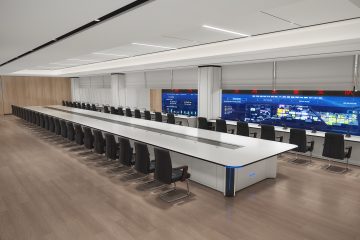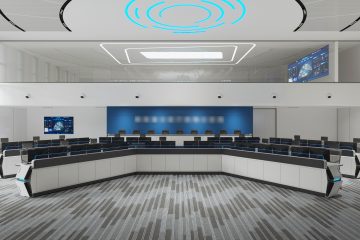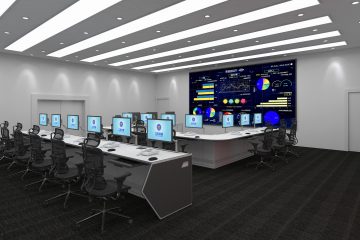Click me to visit our new website
Introduction
Understanding Control room consoles are central to monitoring and operating various systems across power, transportation, energy, telecommunications, and security. With technological advancements, control room consoles have evolved significantly from traditional setups to modern ones. This evolution includes hardware upgrades, improved human-machine interfaces, better operational efficiency, and higher levels of intelligence and automation. This article reviews the history of control room console evolution, analyzes its development trends, and explores future innovation directions.
Origins and Development of Traditional Consoles
Traditional control room consoles mainly consisted of analog devices and mechanical switches, connected by numerous cables. This resulted in complex layouts occupying significant space. Operators relied on instruments, switches, and indicator lights for monitoring and control, making operations complex and prone to errors. Key characteristics of traditional consoles include:
- Analog Display and Control: Use of analog instruments and mechanical switches for data reading and operations. Information transmission was intuitive but imprecise.
- Manual Operations: Operators manually controlled each device, leading to low efficiency and frequent operational errors.
- Device Independence: Poor interconnectivity between devices and low system integration.
Despite their shortcomings, traditional consoles provided reliable support for various industrial and infrastructure operations within the technological constraints of their time.
Evolution of Modern Consoles
With the rapid development of computer, network, and digital technologies, modern control room consoles have transitioned from analog to digital, from isolated to integrated, and from manual to automated. Modern consoles exhibit the following key features:
- Digital Display: Use of large LCD screens, touchscreens, and other devices for clearer and more precise data display.
- Efficient Human-Machine Interfaces: Graphic user interfaces (GUIs) allow operators to use mice, keyboards, and voice commands, greatly improving operational efficiency.
- Integrated Systems: Devices are interconnected via networks for data sharing, achieving high system integration and coordination, enhancing overall reliability and synergy.
- Intelligence and Automation: Incorporation of artificial intelligence and machine learning for autonomous data analysis and anomaly detection, reducing human intervention and increasing response speed and accuracy.
Modern consoles have advanced significantly in hardware while achieving qualitative leaps in system architecture and functional design. For example, modern power dispatch center consoles can monitor the entire power grid in real-time, optimize load distribution, and predict faults using intelligent algorithms, enhancing the stability and safety of power supply.
Future Trends in Console Development
Looking ahead, control room consoles will continue to develop towards greater intelligence, networking, and autonomy. Key future trends include:
- Internet of Things (IoT) and Big Data: IoT technology will enable real-time monitoring and data collection from more devices and sensors. Big data analysis will extract valuable insights from vast amounts of data, enhancing decision-making.
- Virtual Reality (VR) and Augmented Reality (AR): VR and AR technologies will provide richer 3D visualization effects, allowing operators to understand system statuses and fault locations more intuitively, improving operational efficiency and accuracy.
- Artificial Intelligence (AI): AI applications will further enhance the automation and intelligence of consoles. Machine learning algorithms will provide more precise predictions and diagnostics, potentially enabling autonomous fault repair and optimization.
- Distributed Control and Edge Computing: Future consoles will increasingly rely on distributed control systems and edge computing to improve system flexibility and response speed, reducing the risk of single points of failure in centralized systems.
Conclusion
The evolution of control room consoles from traditional to modern reflects the profound impact of technological advancements on industrial and infrastructure systems. Through digitalization, intelligence, and integration, modern consoles have become central to the efficient operation of complex systems. In the future, with emerging technologies such as IoT, big data, VR/AR, and AI, control room consoles will become even more intelligent and efficient, providing stronger support for the safe, stable, and efficient operation of various industries.



0 Comments